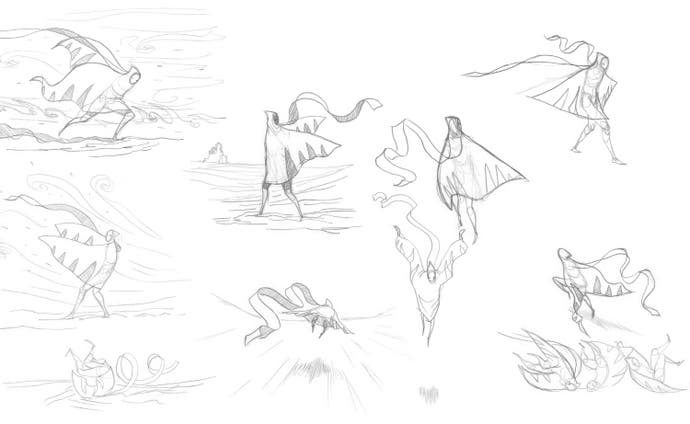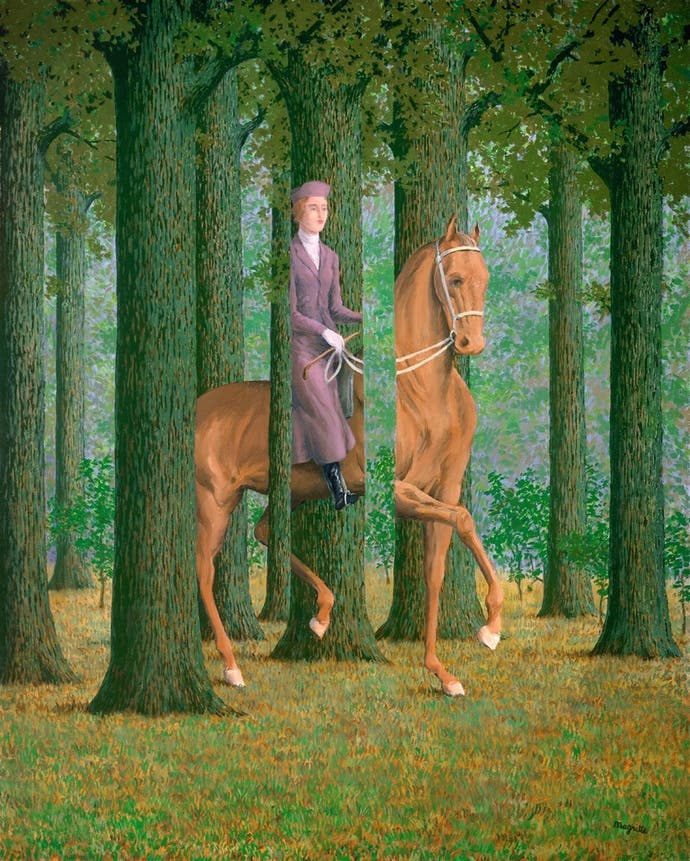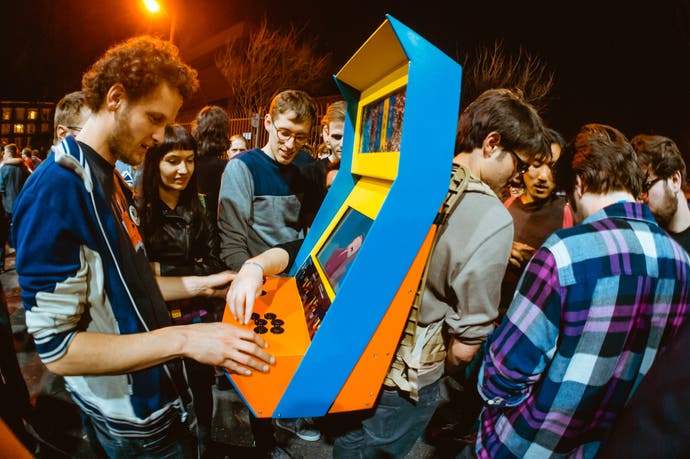A major video games exhibition opens next week - and it's very different
London's V&A museum takes a radical approach.
"Videogames: Design/Play/Disrupt", which opens at London's V&A museum next Saturday, 8th September, is not the first exhibition dedicated to games by an august institution of art and design. Many reading this might remember "Game On", an exhibition staged by the Barbican in 2002 (and touring ever since, more or less) which featured such precious artifacts as the PDP-10 mainframe used to play Spacewar! in 1962 and an original Tempest arcade cabinet, almost all of it playable. It was an authoritative and tactile walk through video game history that couldn't help but electrify an existing love of the medium.
Marie Foulston, curator of the V&A exhibition, remembers Game On too, and she wants to build on it, not replicate it. "We thought that the field of video game design and culture is too too vast to look at the entirety of it, and so we decided instead to look at a different angle and that angle was the contemporary," she told me at a launch event for the exhibition back in April. It's not what people expect from the V&A's first engagement with video games. "That is literally the first question that I get from most people: 'Oh, is it a retrospective, is Pac-Man there?' And I'm like, 'I'm very sorry, no he's not.'"

Instead, you'll find The Last of Us, Minecraft, Journey, No Man's Sky, Splatoon, League of Legends, Overwatch, plus many more off-the-wall inclusions in a collection that doesn't go any further back than the mid-2000s. And though some will be shown in the form of playable code, the exhibit, supported by the Blavatnik Family Foundation, takes a multimedia approach. You'll see original concept art, design notebooks, film and installations, as well as artworks that have inspired video games; and you'll find an exhibition that seeks to represent games as living things that interact with their players, rather than as sacred, immutable objects of design.

The first of its three themes - Design - is perhaps the most conventional way to approach the subject, but even here the V&A has adopted some unusual angles. Here, you'll see work illustrating the game design process: concept art sketches for The Last of Us and Splatoon; a graphically crude, playable prototype of the social multiplayer element of Journey; a painting by the Belgian surrealist René Magritte that influenced a scene in Kentucky Route Zero; a video wall displaying GIFs created by a bot that explored No Man's Sky's procedurally generated universe.
The Disrupt theme, meanwhile, looks at video games that touch on complex social and political issues, mostly indie games and experimental projects. Nina Freeman's How Do You Do It?, a game which explores a young girl's discovery of sexuality, will be playable, and there'll be exhibits based around a recreation of Pong written in an Arabic-script programming language, and Phone Story, the infamous mobile game that satirised the child exploitation and human misery that lurk in the background of smartphone manufacture - and that got banned from Apple's App Store for its trouble.
But it's the Play part of the exhibition that could be the most significant step forward for the way the cultural establishment regards video games, because the focus here isn't on the designers and artists, but on the players themselves as equally important authors of the video gaming experience. This, after all, is a feature of games that distinguishes them from other artforms and makes them hard to apply traditional academic and critical models to. It's also so fundamental to some games that they don't meaningfully exist without player input. As Foulston put it: "If you preserved Minecraft on a server, what does it mean to turn it on in 100 years if no-one's playing that game?"

Here, the V&A will showcase the work of player communities who are, in Foulston's words, "democratising" video games on a massive scale. Westeroscraft, a recreation of the Game of Thrones world in Minecraft, will be exhibited, alongside spectacular footage of the League of Legends world finals in the Olympic stadium in Beijing and the fanart and cosplay creations of the Overwatch community. Much of this will be presented as a 10-minute immersive video experience on a massive projector screen.
The final room of the exhibition will be an anarchic playground of "homebrew, punk, DIY experiences" where visitors are encouraged to get hands-on with a range of indie art projects. Featured here will be a playable arcade machine in a backpack, a ruined old Mitsubishi car that has been transformed into a racing game cabinet, Line Wobbler (a one-dimensional dungeon crawler played on an LED lighting strip and a door stopper), and a range of hand-illustrated arcade cabinets created by the art collective We Throw Switches for indie favourites like QWOP and Enviro Bear 2000. This is home turf for Foulston, who has previously worked on the notorious Wild Rumpus indie parties and, as such, knows a good deal about games that work in public spaces. It should be a riot.

Not everything in this conceptually broad and challenging exhibition will be so easy to display in a manner that's engaging for visitors, though. Foulston is fond of the Frank Lantz quote, "Games are operas made out of bridges" - the suggestion being that games are a space where tech and engineering meets compositional art that is, in itself, multimedia and multi-faceted. How do you go about exhibiting an opera or a bridge, never mind something that's a combination of the two?
"You can sometimes take a physical video game and literally put it into a physical space, but there are other scales at play," said Foulston. "There is the scale of how much time it takes to play a video game - some games will take upwards of 60 hours for anybody to necessarily understand them as a design object. And there is the scale of interactivity - if you're not somebody that is versed with playing video games, that doesn't know how to operate a game controller, what does it mean for you? And so for each of the works, we took a step back and looked at what is it about this game and its design, or what is it about this culture and this community that we want to represent, and what is the correct object for us to be able to tell that through? And sometimes it is through the games themselves, but sometimes it is through digital objects from their design process, sometimes it's from physical objects from their design process such as the concept art and the pencil sketches or the notebooks.
"I think that's one of my favourite things - every design studio that we went to had a notebook. Everyone has a notebook that they use and across all fields of design, that's something that unites everyone - and it's like, hey, if you're not familiar with games don't worry, because there's designers here, and they all use their notebooks and pen and paper, just like you do."

Foulston said that the prospect of representing such a diverse medium in a single exhibition gave her "a dizzying sense of vertigo" initially. It was also "incredibly challenging" to figure out how to make it accessible, not just to the many and non-homogeneous video gaming communities, but to the broader museum-going public who might not be personally familiar with games at all. The answer that she and the V&A have come up with is daring enough that it should challenge the preconceptions of even the diehard video game fans who attend. However successful the finished show is - and we hope to report back from press previews next week - that the topic is being explored in such an unconventional and forward-thinking way by a 166-year-old museum is something to be celebrated. And it's just a start: "We hope that this will be the first exhibition that we do in video games, which implies there will be more that will come after," Foulston said.
"It's not necessarily our ambition that everybody leaves wanting to be a designer, or that everyone leaves expecting they're going to go home and start playing things that they haven't before," she told me. "But what we do want to ensure that happens is that everybody leaves with a newfound respect for both the players and the designers - and the discipline itself."
Videogames: Design/Play/Disrupt opens on Saturday 8th September and tickets are available now.

